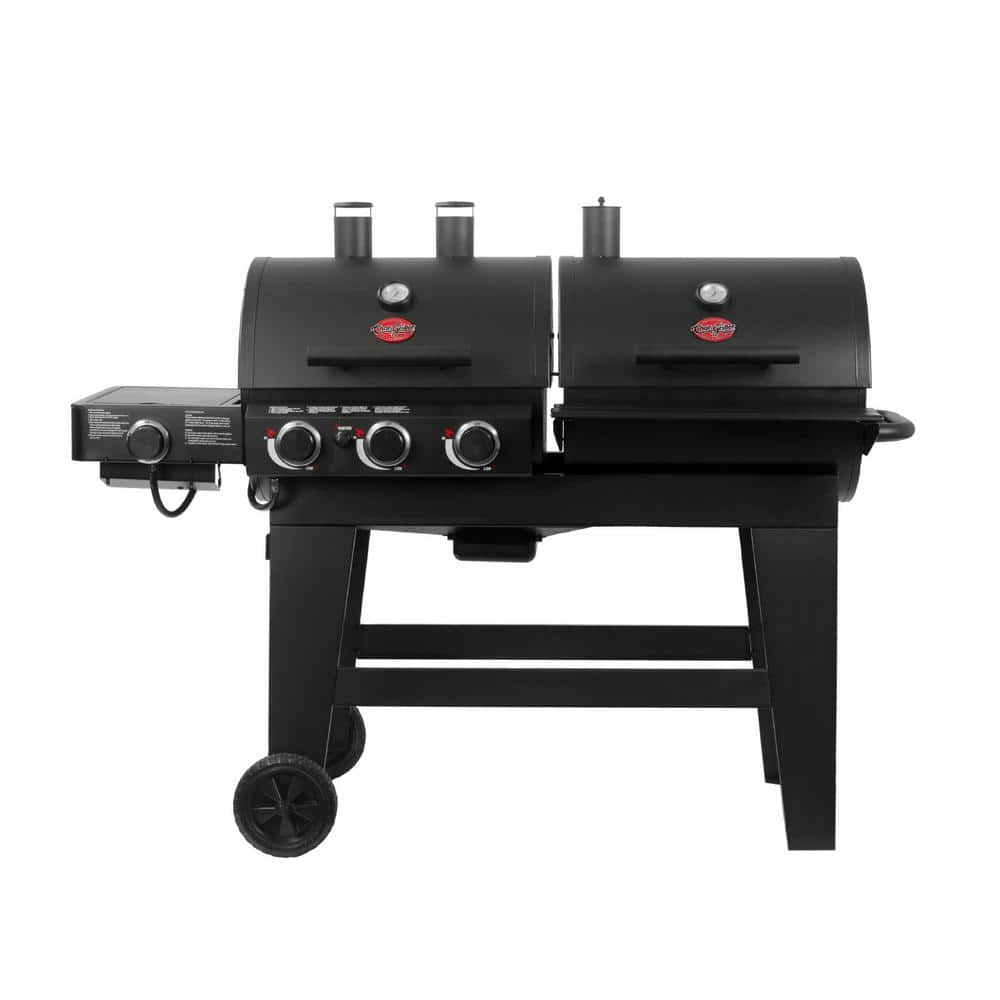Char-Griller Double Play 1,260 sq., in. 3-Burner Gas and Charcoal Grill in Black
Easily cook with gas and charcoal at the same time. Convert to horizontal smoker by adding a side firebox. Heavy duty construction that is built to last.
This versatile, dual-function grill is every grill lover’s dream. Incorporating charcoal and gas grilling in one unit, the Double Play 3-Burner Gas and Charcoal Grill provides 1248 sq. in. of BBQ grilling and smoking space. This grill provides many great features including stainless steel heat gauges, cast iron grates and easy-dump ash pan. The gas side allows you to cook up meals in a flash when you’re in a time crunch or just need more grilling space, offering three main burners with heat tents with an additional side burner for pan and skillet heat-ups. Add on a side firebox (sold separately) for great BBQ smoking.
- Charcoal and gas grill combo offers 1260 sq. in. of cooking space
- 52,800 BTU gas grill equipped with electronic ignition, 3 main burners with heat tents and 1 side burner
- Adjustable grate height for temperature control
- Equipped with stainless steel heat gauges, cast iron grates and easy-dump ash pan
- Chrome-plated warming racks give you space to keep foods toasty
- Fashioned with wheels and a lift bar for easy portability
- Compatible with a side firebox (sold separately) for extra smoking space
- Measures 66 in. W in. x 28.3 in. D in. x 49.2 in. H
Additional information
| Assembled Depth x Height x Width (in.) | 66 x 49.20 x 30.5 |
|---|---|
| Certifications and Listings | CSA Certified |
| Grate Warranty | 1 Year |
| Overall Grill Warranty | 1 Year |






by Luijer
excellent grill. I love that it is a two in one, it also has a burner on one side that gives it an added value for such a low price. easy to put together. And you can also put aside if you like a smoker. Commended
by Inga
It was a great investment.